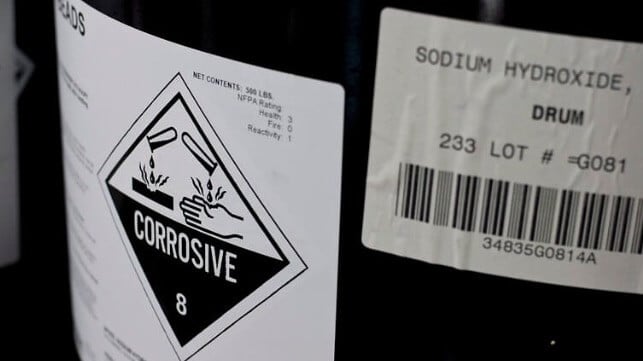Researchers Criticized for Plan to Dump 20 Tonnes of Lye off Cape Cod

Massachusetts' fishermen and environmentalists are not pleased with a new climate-saving idea proposed by researchers at Woods Hole Oceanographic Institution (WHOI). A small team from the famed research institute wants to put 20 metric tonnes of lye into the water off Cape Cod in order to find out whether it boosts ocean uptake of carbon dioxide. The plan has drawn support from marine scientists and regulators, and strong objections from stakeholders who don't want dissolved caustic soda released into their seas - even if the local concentration will be equivalent to adding a teaspoon of the chemical solution to a full bathtub of water.
This climate-engineering idea's technical name is ocean alkalinity enhancement (OAE). The ocean absorbs massive quantities of CO2 from the atmosphere, but as the concentration increases in the water column, the water becomes more acidic from the formation of carbonic acid - just like a carbonated soda. The rising acidity inhibits further absorption of CO2, and it interferes with the lifecycle of organisms with calcium carbonate shell structures (like clams, corals, sea stars, and other hard-shelled creatures). By dumping a caustic solution into the sea, the thinking goes, the water column would become less acidic and would absorb even more CO2, helping to cool the climate. (Variations on this procedure have already been done commercially to generate carbon credits, which are sold as carbon offsets.)
The research team from Woods Hole believes that their trial-scale research test would be undetectable within five days, with little impact on marine life. The study plan calls for suspending operations if marine mammals are sighted in the area.
"Given our seeming inability or unwillingness to rapidly shift away from fossil fuel burning, which we absolutely have to do, it may be important to start studying whether any of these methods really are . . . going to help get carbon out of the atmosphere," co-lead researcher Dan McCorkle told WBUR. "It's important now to carry out research that's science-based and science-focused."
However, like all forms of geoengineering, OAE has its critics. In addition to any concerns over potential collateral damage to the ocean environment, reaching the industrial scale that would be required to offset CO2 emissions would be a herculean effort, involving massive amounts of mining, processing and material transport. This extra industrial activity would require energy and create more emissions.
WHOI's "LOC-NESS" project will try out the concept on a far smaller scale to monitor air and water characteristics during the OAE process - assuming that the EPA grants a permit for the discharge. The public comment period for WHOI's permit application closed on Friday, and it drew strong objections from the advocacy group Friends of the Earth, the New England Fishermen's Stewardship Association, the environmental-law NGO Center for Biological Diversity (CBD), and a variety of local stakeholders. CBD - known for lawsuit-based opposition to fossil fuel E&P - warned in colorful language that EPA is "violating numerous federal laws in the approval of this rushed permit," and accused the agency of proceeding in secrecy and without interest in the public good.
